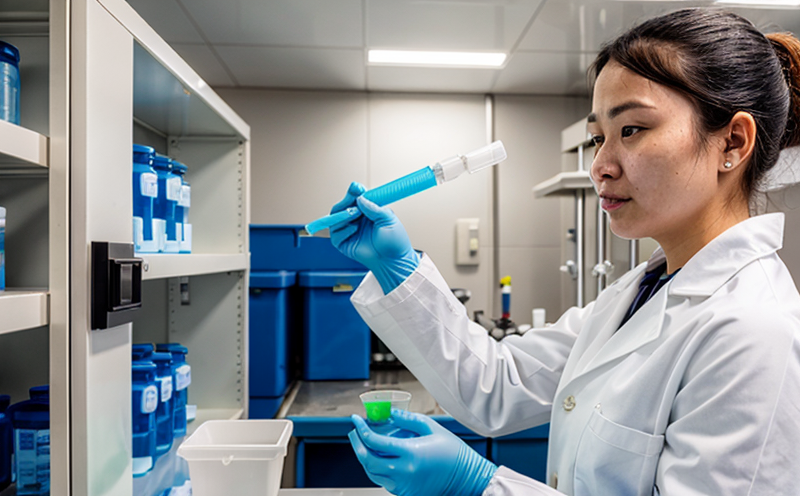USP Minimum Inhibitory Concentration Testing
The USP (United States Pharmacopeia) Minimum Inhibitory Concentration (MIC) testing is a critical method used in pharmaceutical development and quality control to assess the antimicrobial activity of compounds. This test determines the lowest concentration of an antibacterial, antifungal, or antiviral agent that prevents visible bacterial growth on a solid medium. The MIC test is particularly important for ensuring the safety and efficacy of new drug formulations.
The process involves inoculating microorganisms onto agar plates containing various concentrations of the antimicrobial compound in broth. After incubation, the lowest concentration at which no visible bacteria can be detected is identified as the MIC. This ensures that the compound does not only prevent growth but also provides a margin of safety against potential contamination.
The USP guidelines provide stringent standards for this testing procedure to ensure consistency and reliability across different laboratories. Compliance with these standards is crucial, especially in the pharmaceutical sector where product quality directly impacts patient health.
For accurate MIC testing, it is essential that the laboratory adheres to strict protocols regarding reagent preparation, inoculum concentration, and incubation conditions. These parameters can significantly influence the outcome of the test, making precise control over each step critical.
The instrumentation used in MIC testing includes automated systems capable of handling multiple samples simultaneously, ensuring efficiency and consistency. The results are then analyzed using statistical methods to ensure accuracy and reproducibility.
- Automated MIC Testing Systems
- Statistical Analysis for Precision Results
Why It Matters
The USP MIC testing is not only a regulatory requirement but also plays a pivotal role in the drug development process. By ensuring that the antimicrobial agents used are effective at the lowest possible concentration, this test helps minimize unnecessary exposure to these compounds. This precautionary approach supports better patient outcomes and reduces the risk of microbial resistance.
Pharmaceutical companies rely on MIC testing results to optimize their formulations, ensuring they meet both efficacy and safety standards. Compliance with USP guidelines is essential for maintaining product quality and ensuring that drugs can be safely used by patients without causing adverse effects.
In addition to its role in drug development, MIC testing also supports the quality assurance process during manufacturing. Regular testing helps identify any deviations from expected performance early on, allowing for timely corrective actions. This proactive approach enhances reliability and trustworthiness of pharmaceutical products.
Eurolab Advantages
Eurolab offers comprehensive USP MIC testing services tailored to meet the stringent requirements set by the United States Pharmacopeia. Our state-of-the-art facilities and experienced team ensure that every test is conducted with precision, accuracy, and reliability.
- ISO 17025 Accreditation
- Comprehensive Quality Management System
We use advanced instrumentation to perform MIC tests, which guarantees consistent results across all samples. Our team of microbiologists and quality assurance experts ensures that every test adheres strictly to USP guidelines.
Eurolab’s commitment to excellence is reflected in our robust quality management system, which includes regular audits and continuous improvement initiatives. This approach ensures that we consistently deliver high-quality results that meet regulatory requirements.
Quality and Reliability Assurance
- Reagent Quality: We source reagents from reputable suppliers to ensure consistent performance across all tests.
- Inoculum Preparation: Precise preparation of inocula ensures that the test results are representative of real-world scenarios.
Eurolab maintains a stringent quality control program that includes regular calibration and validation of equipment. This ensures that all instruments perform optimally, contributing to accurate and reliable MIC testing outcomes.
We also employ robust statistical methods for analyzing the data collected during each test. These analyses help in identifying any inconsistencies or deviations from expected results, allowing us to take corrective actions promptly.





